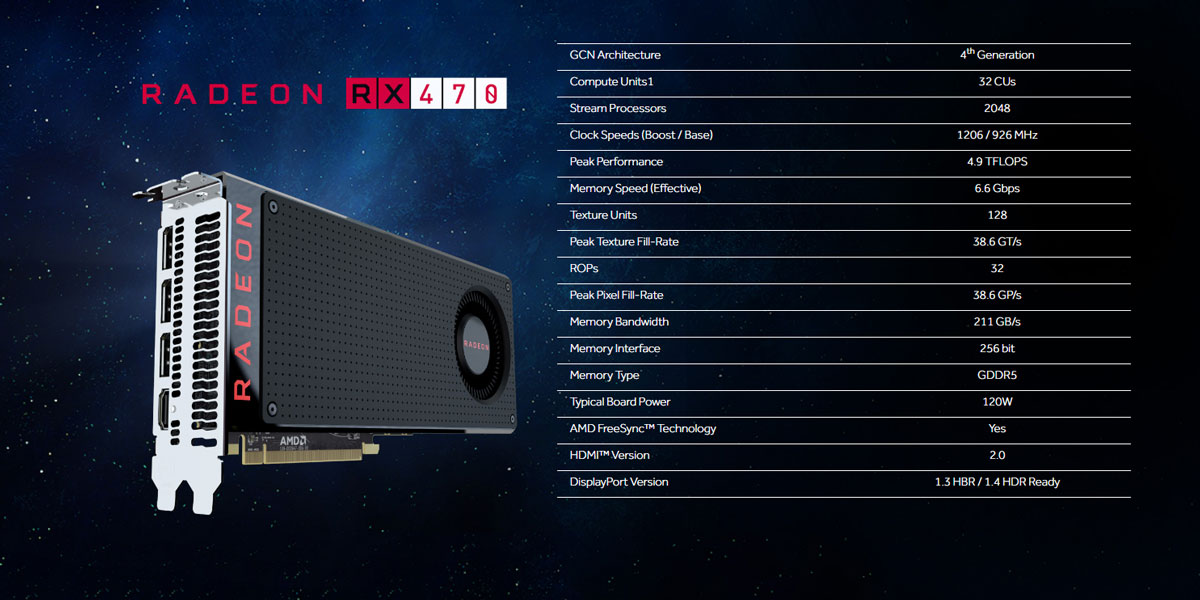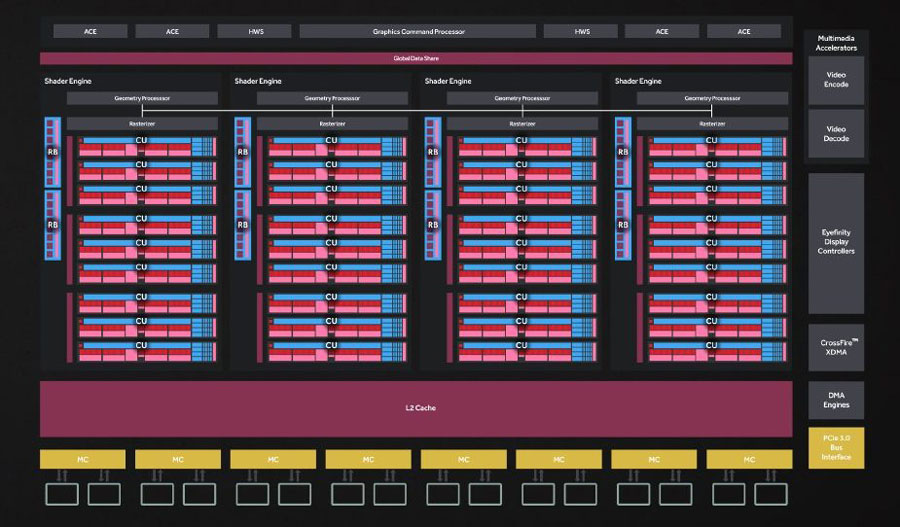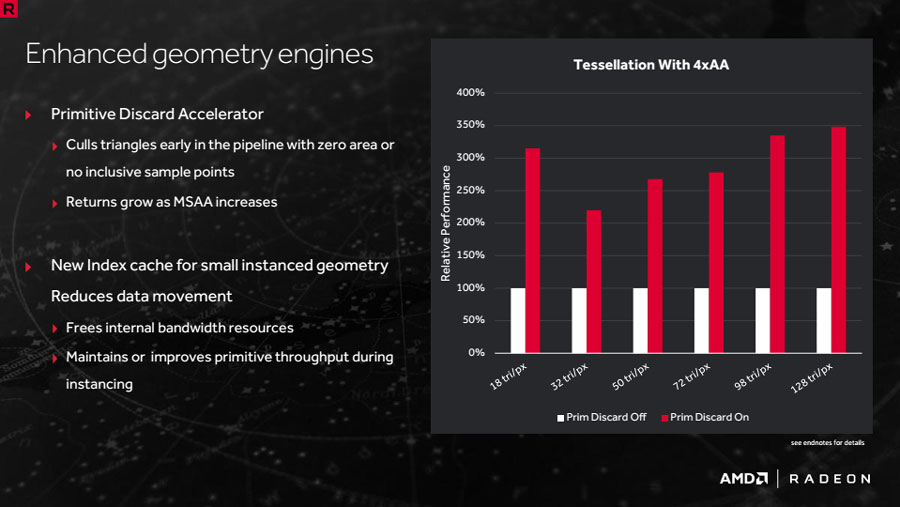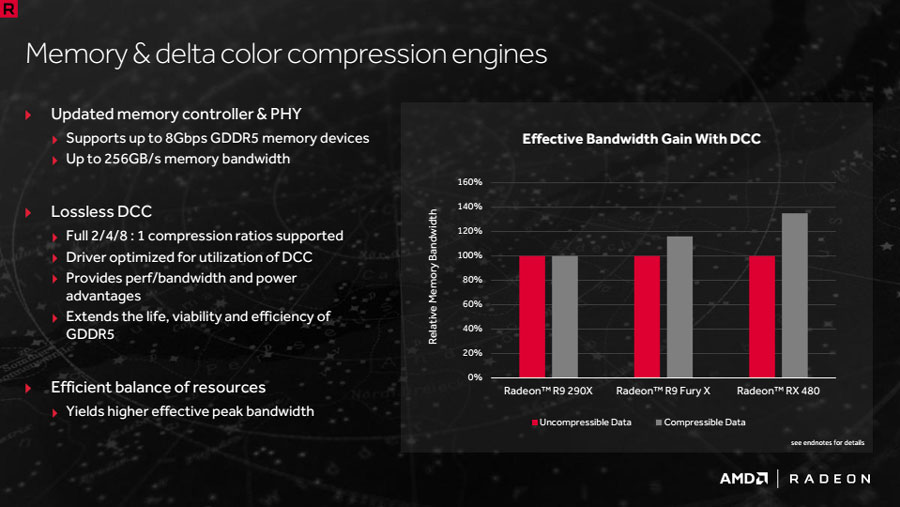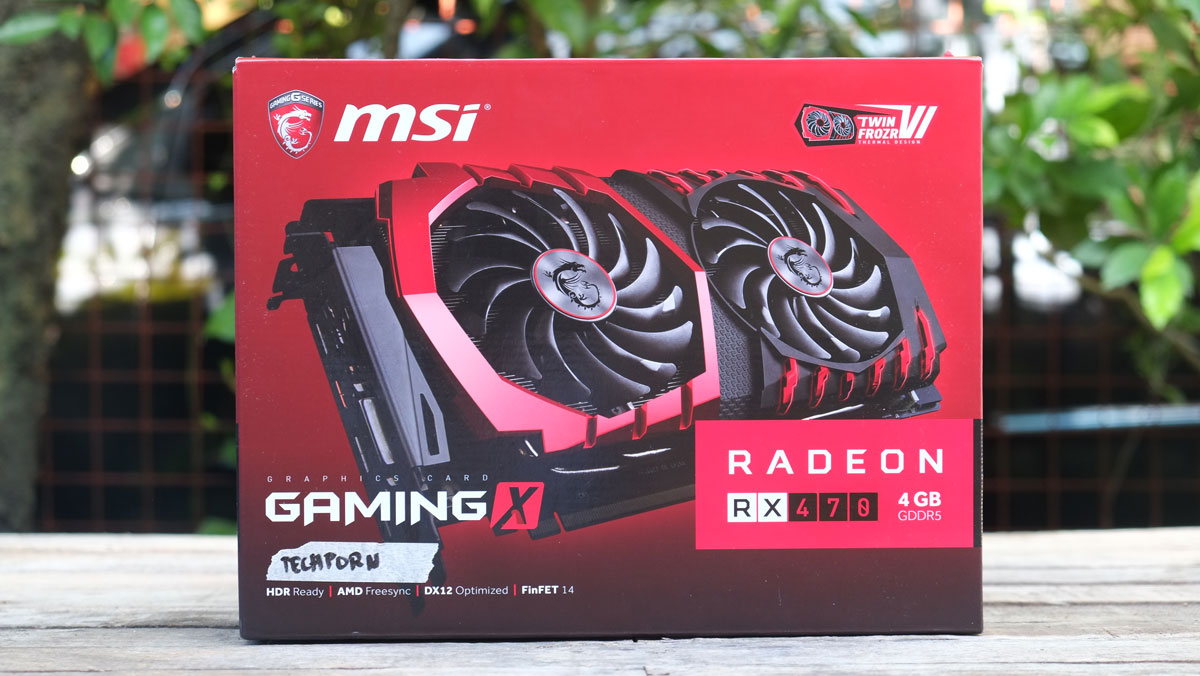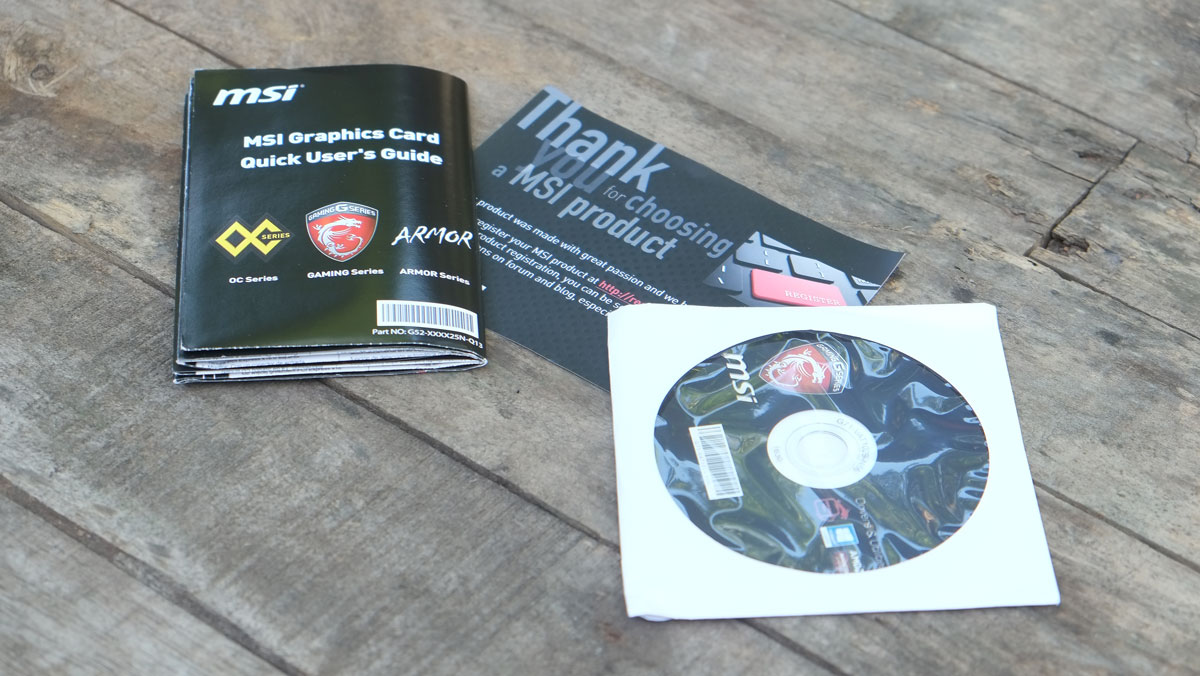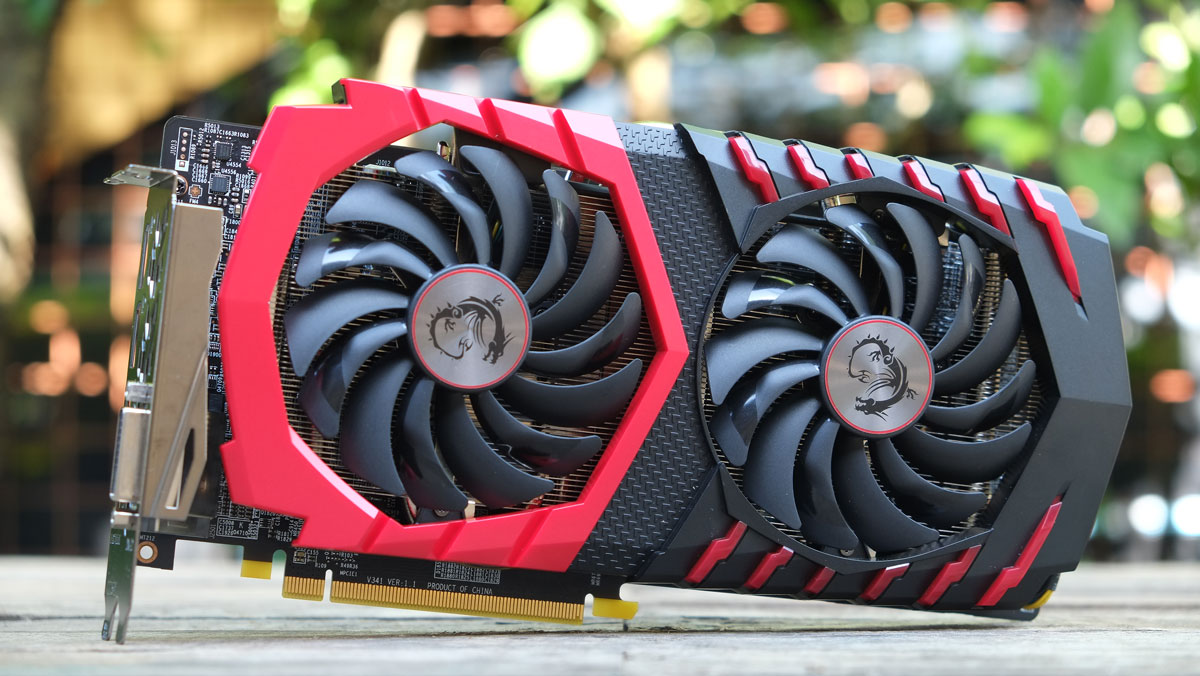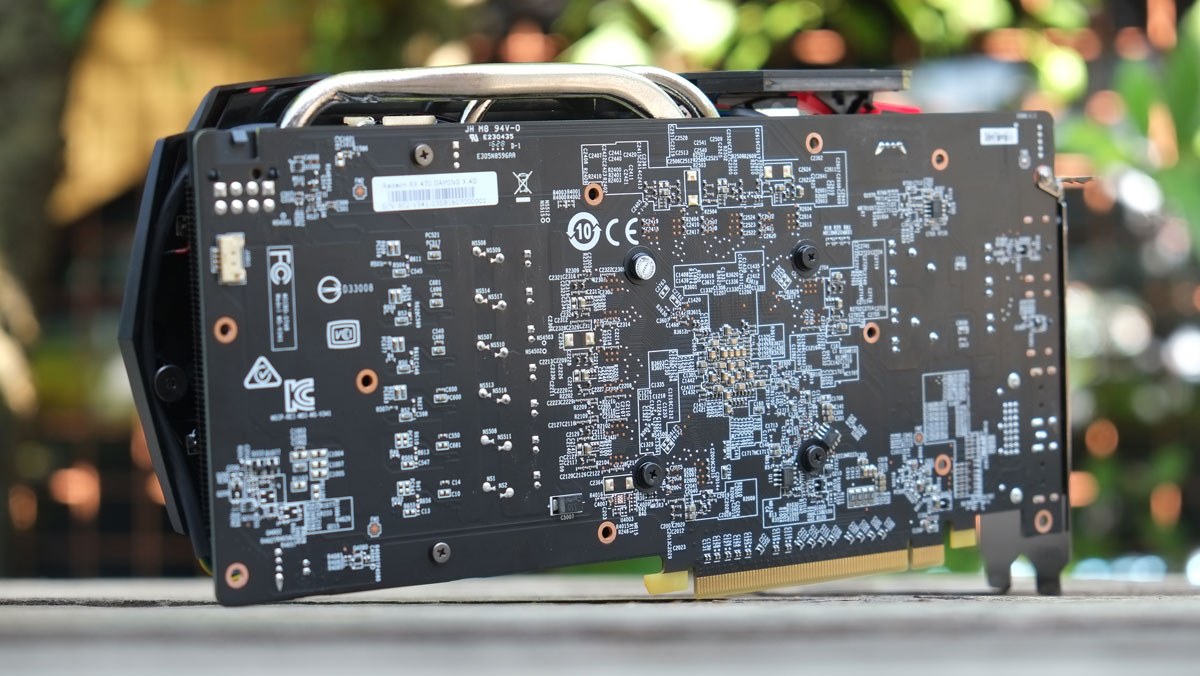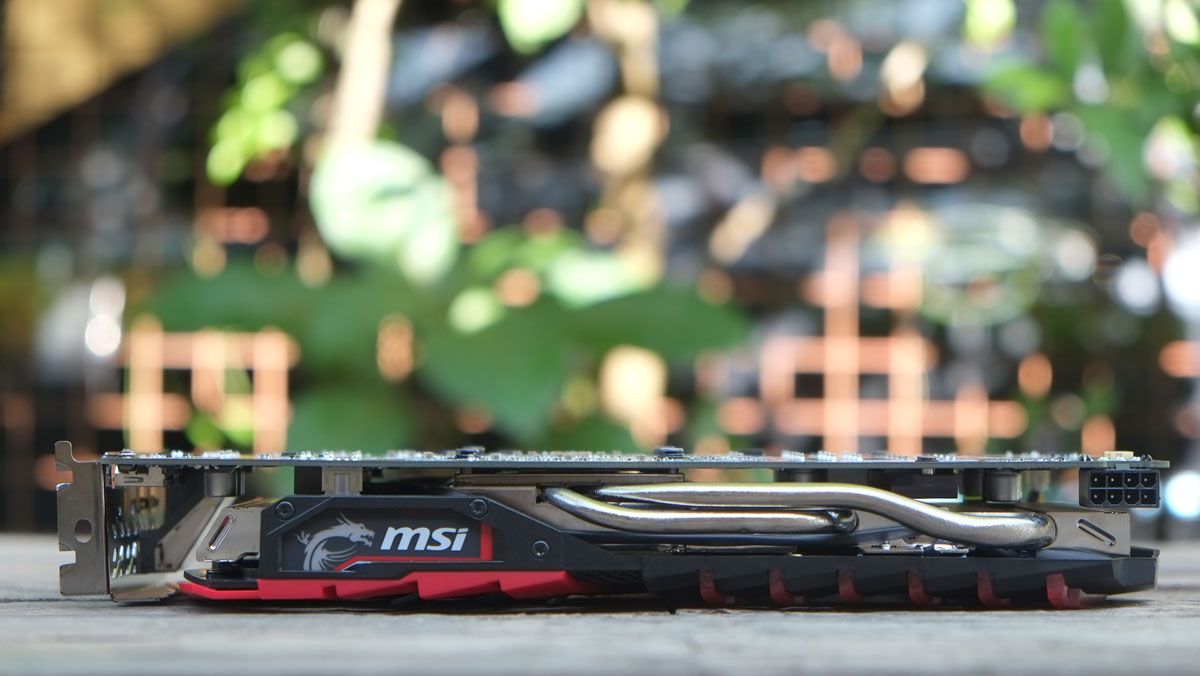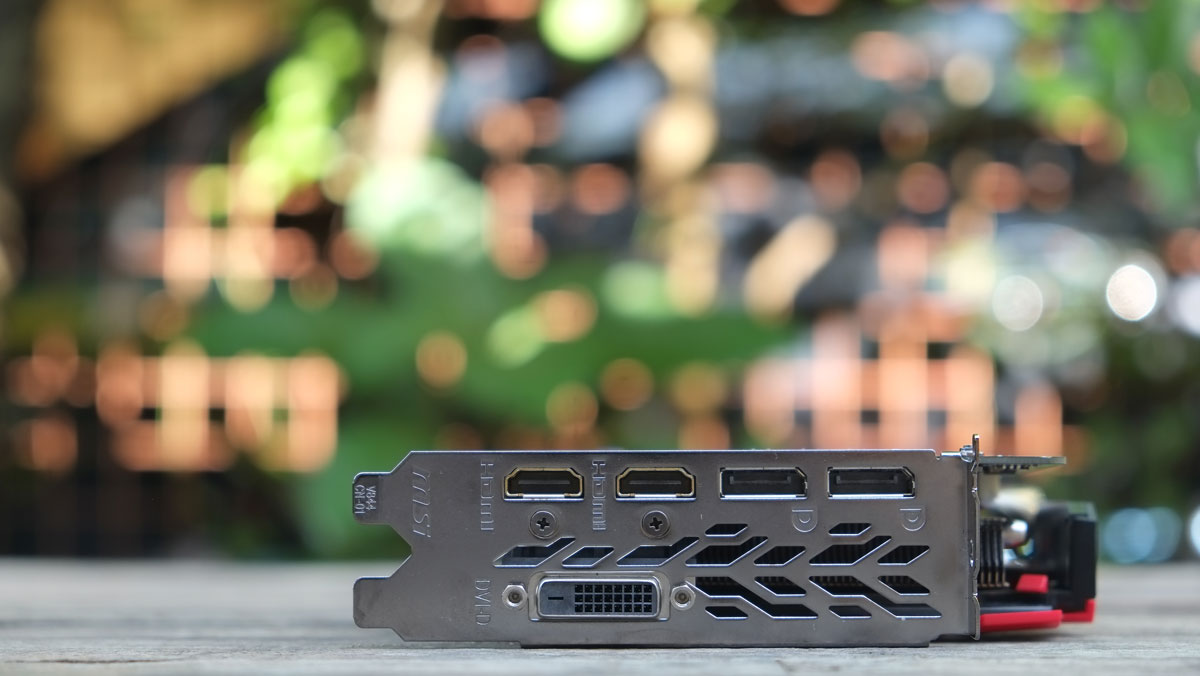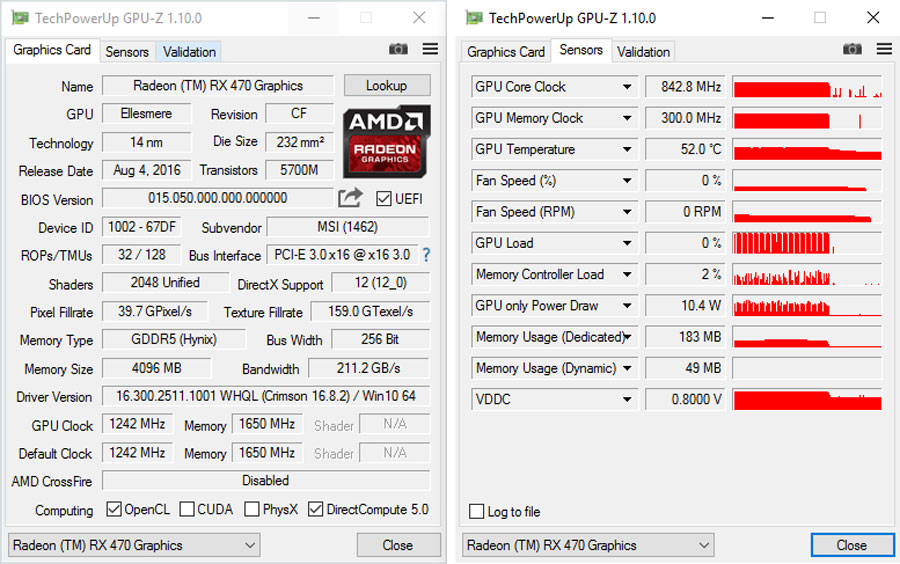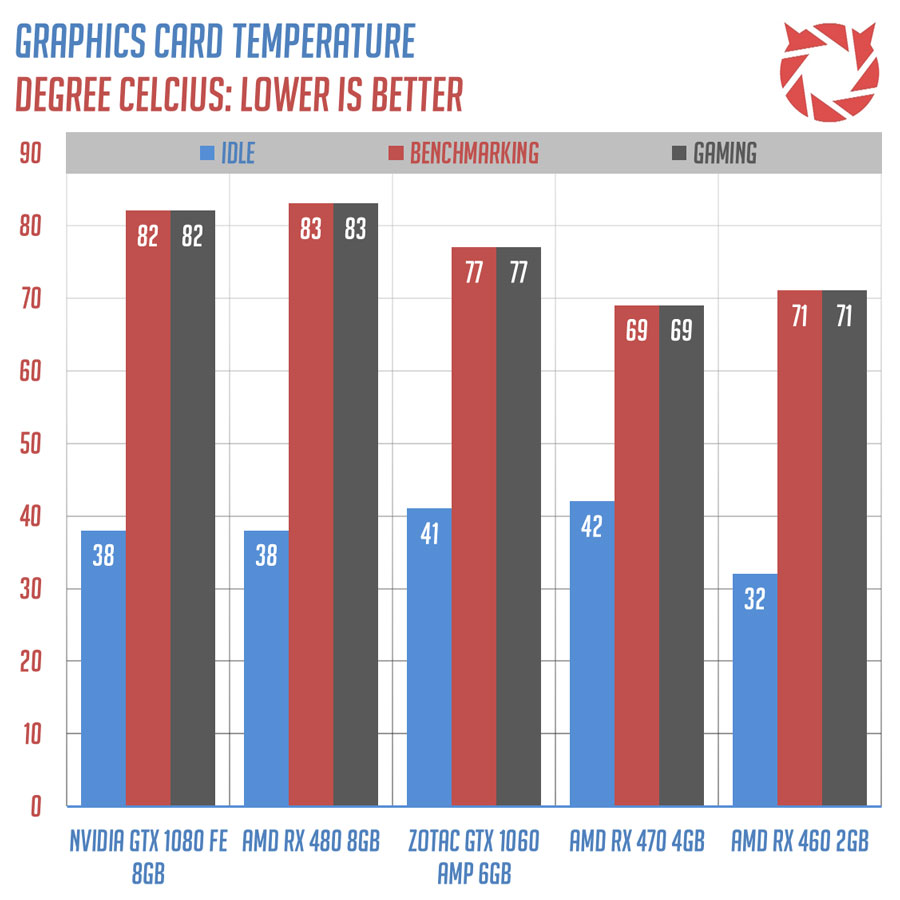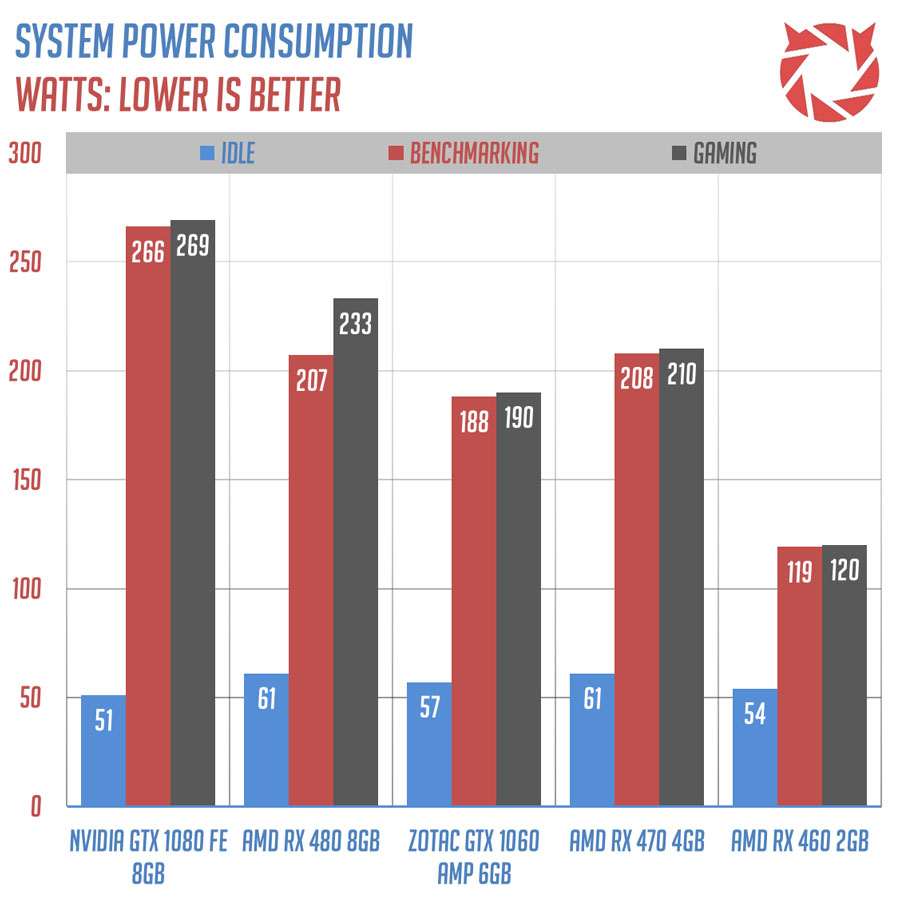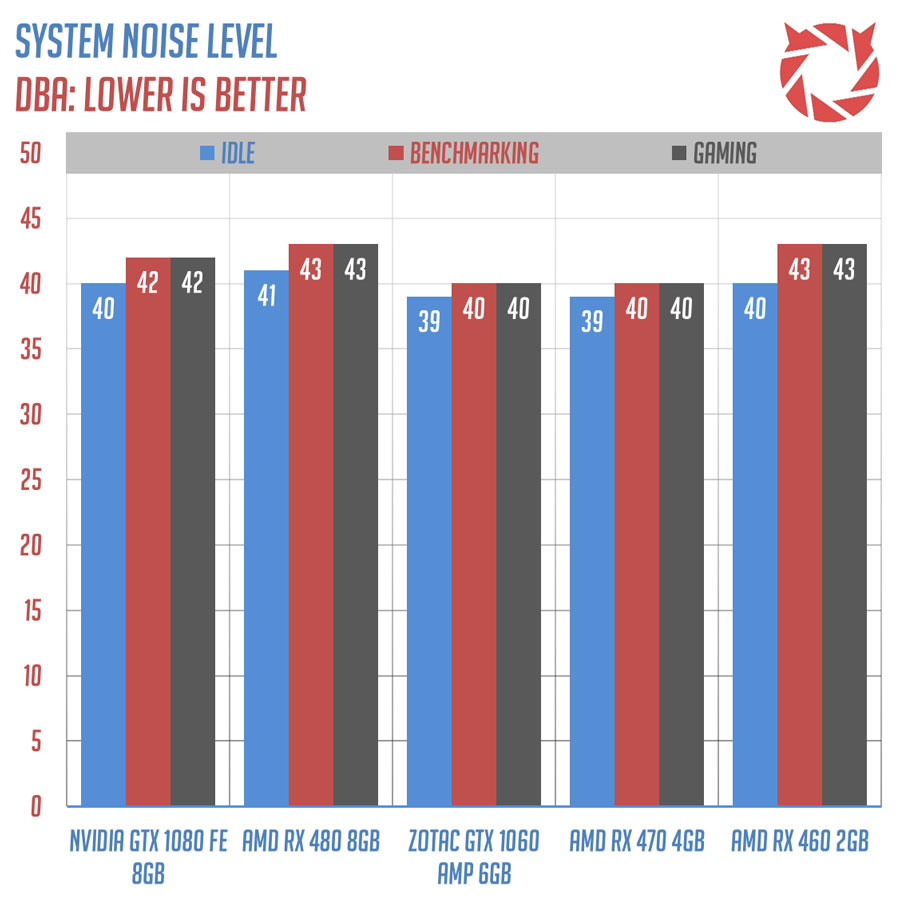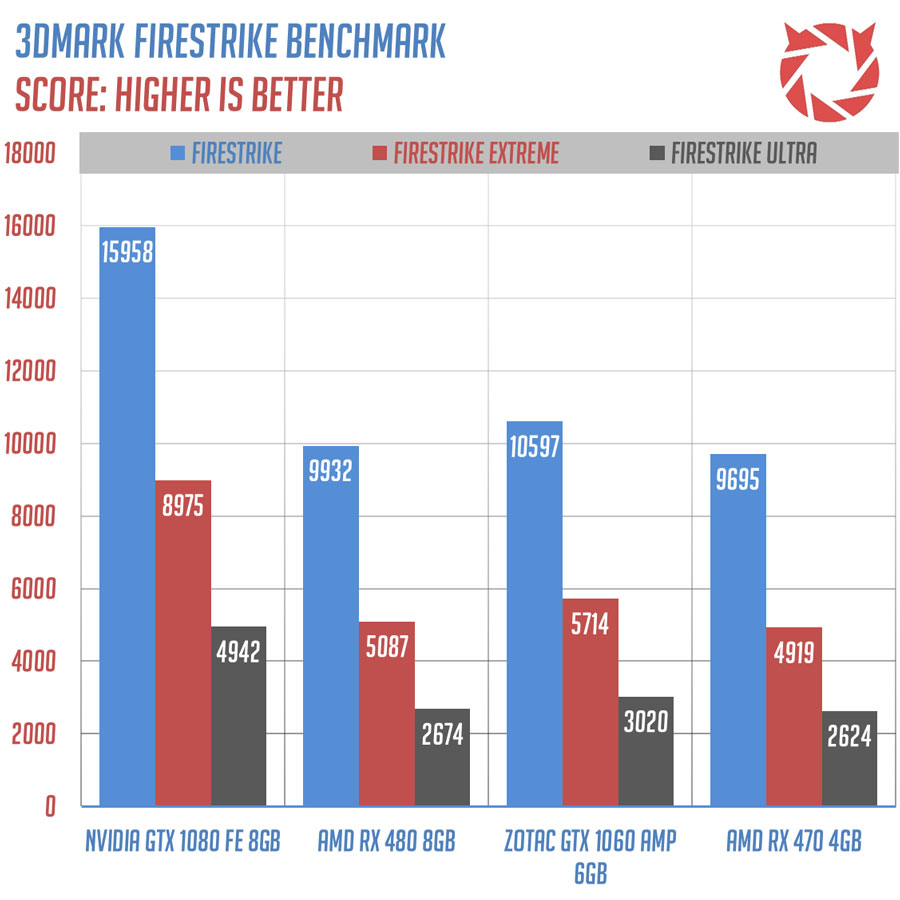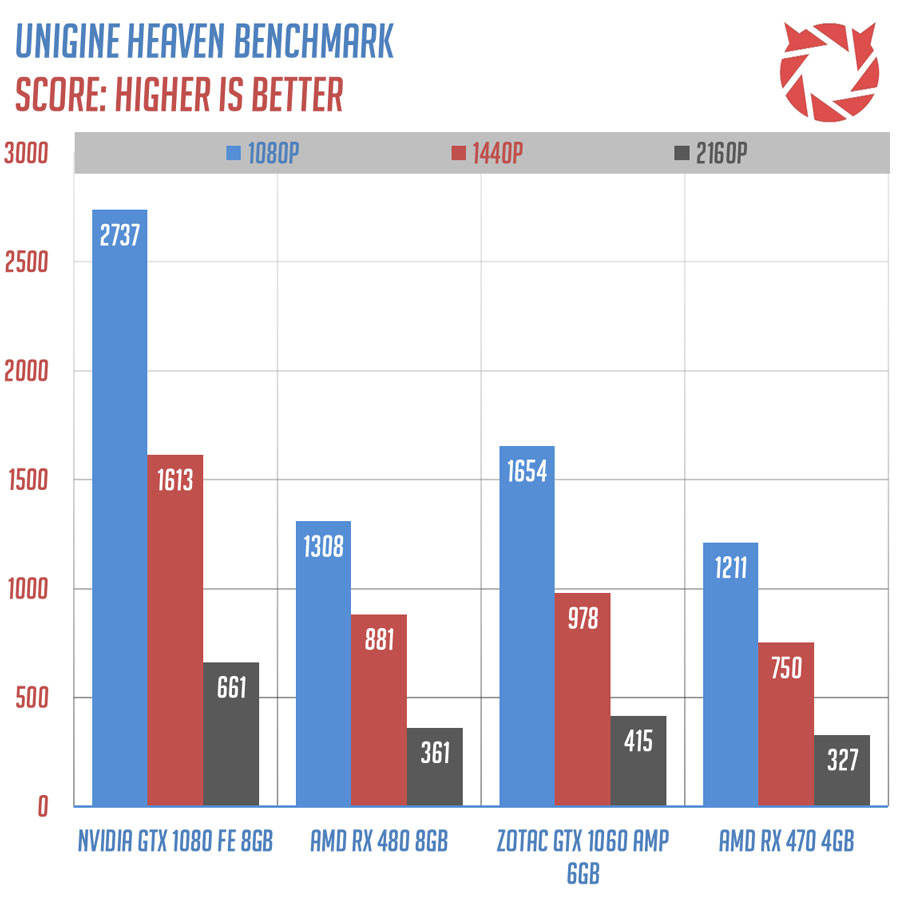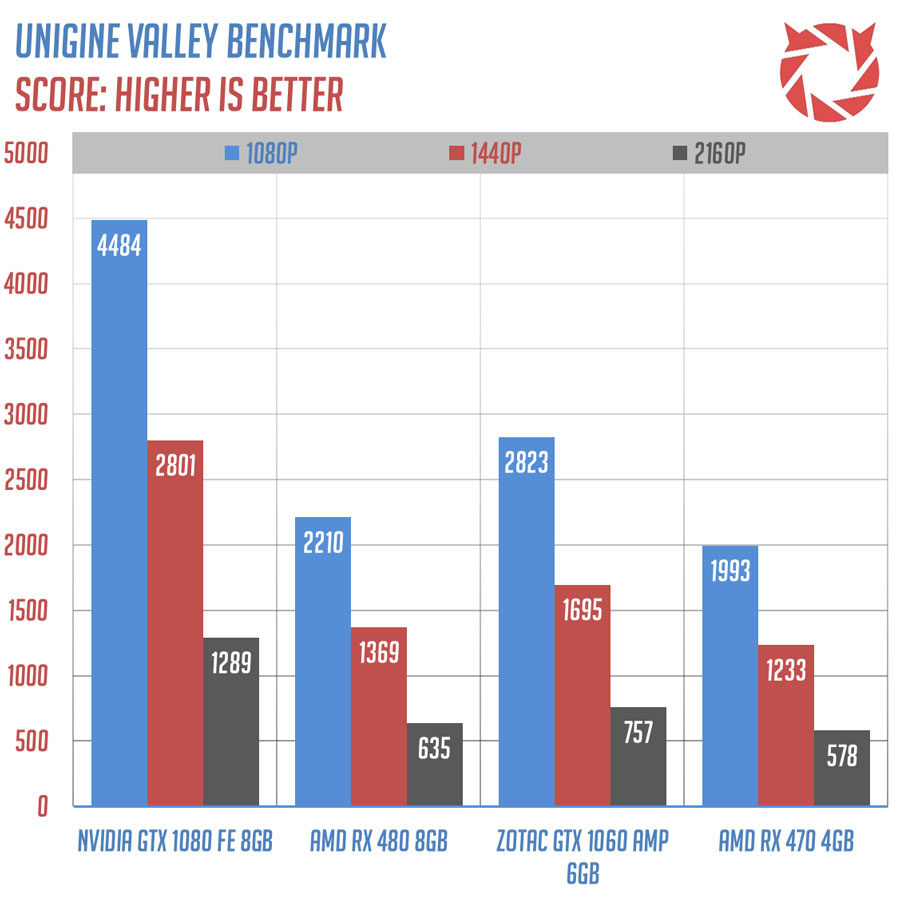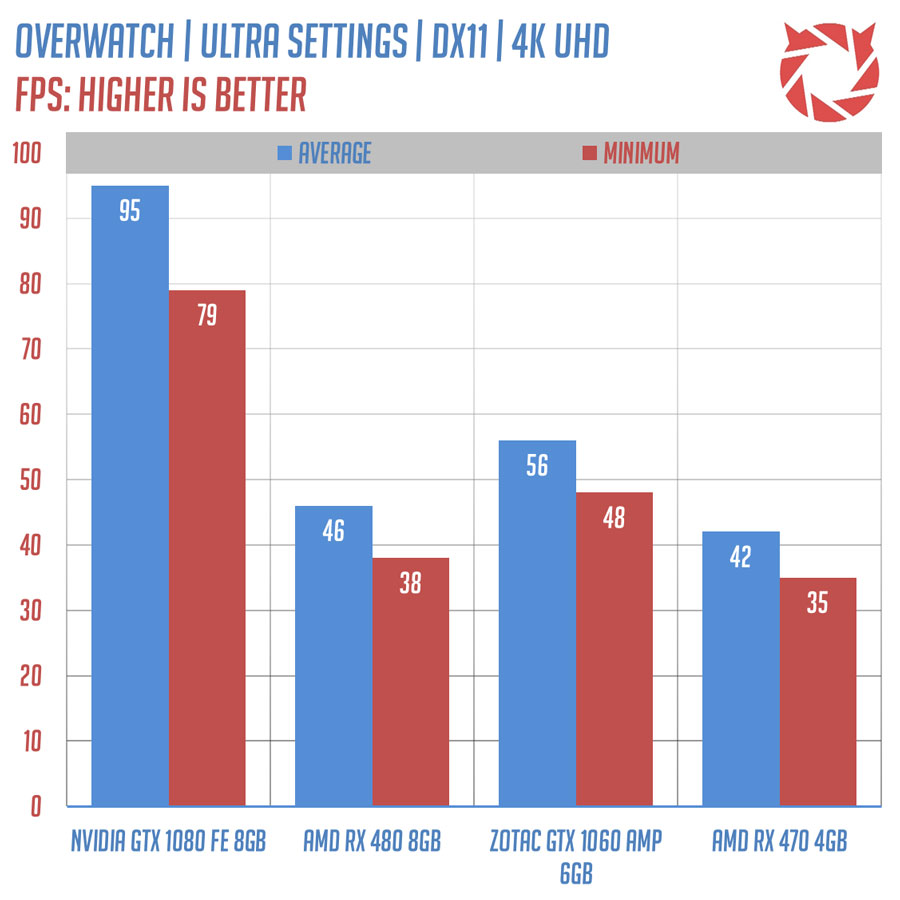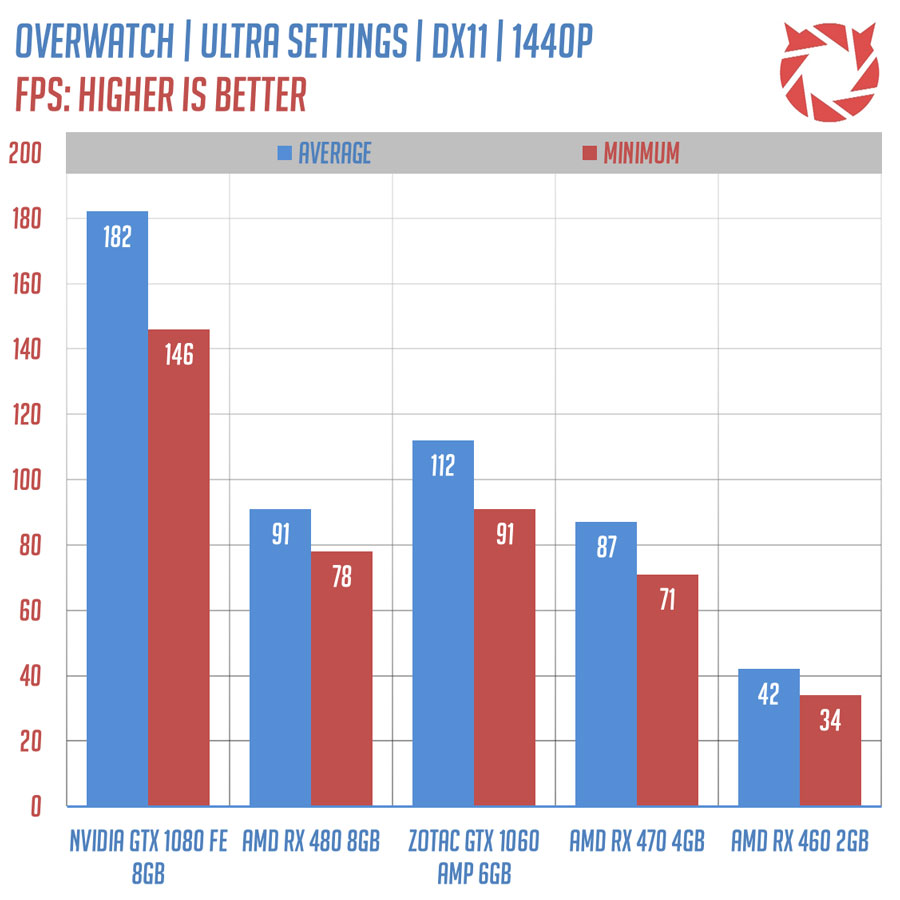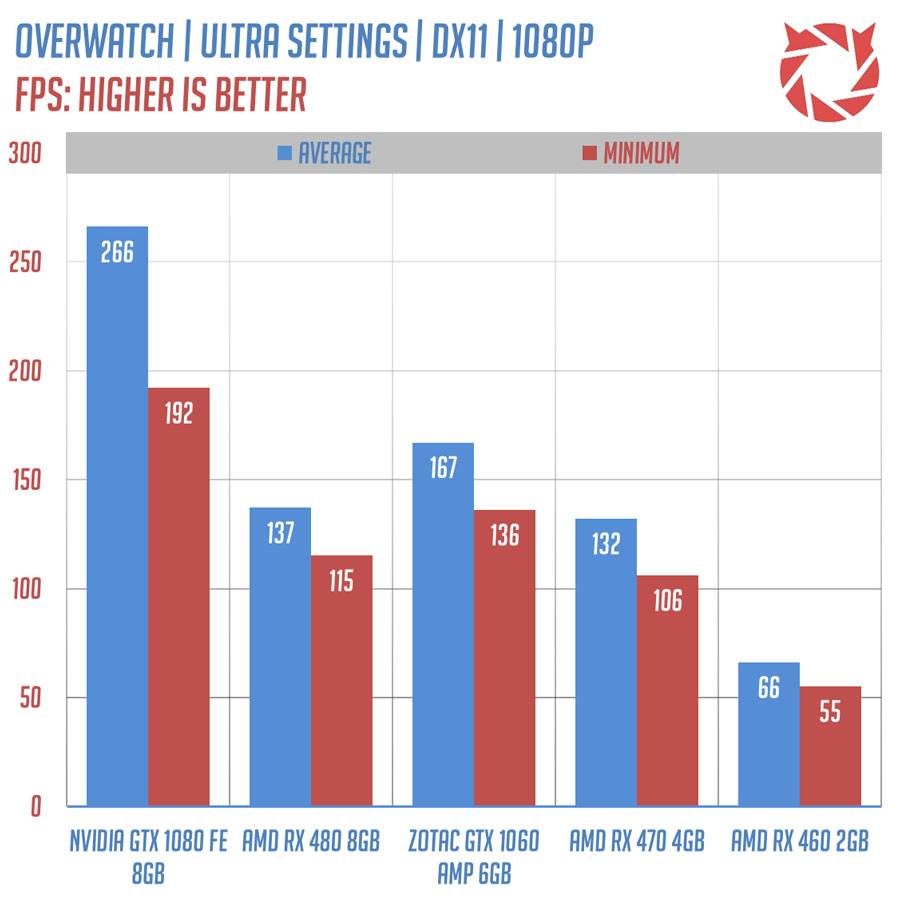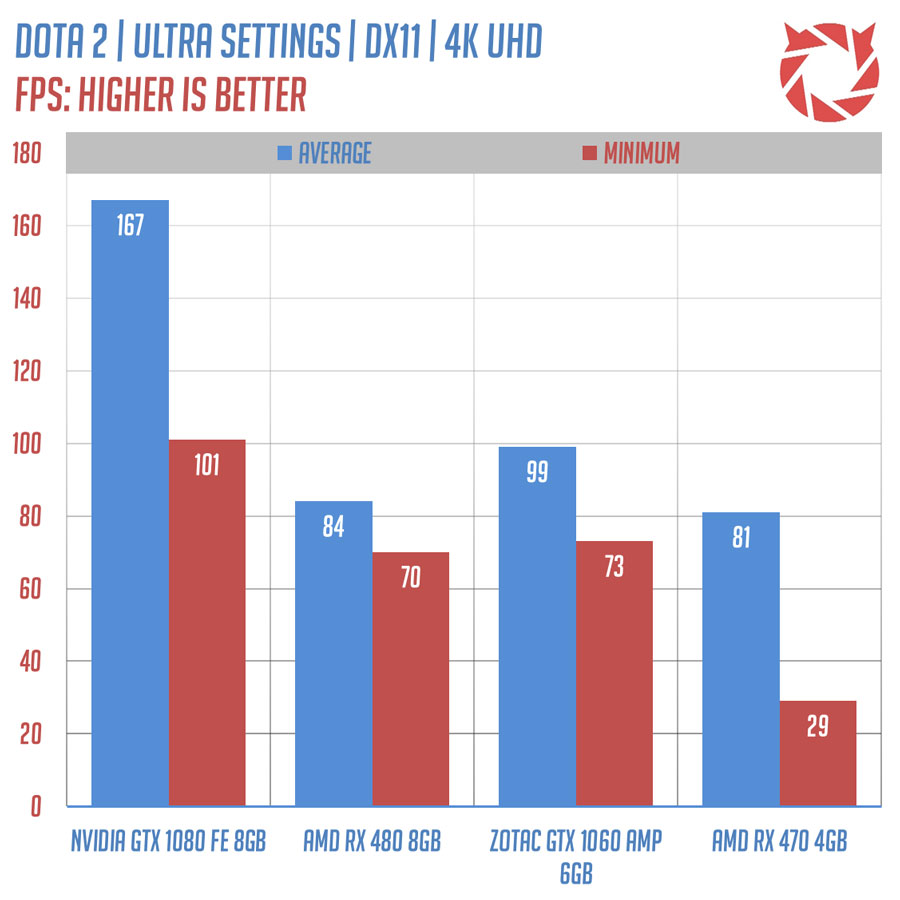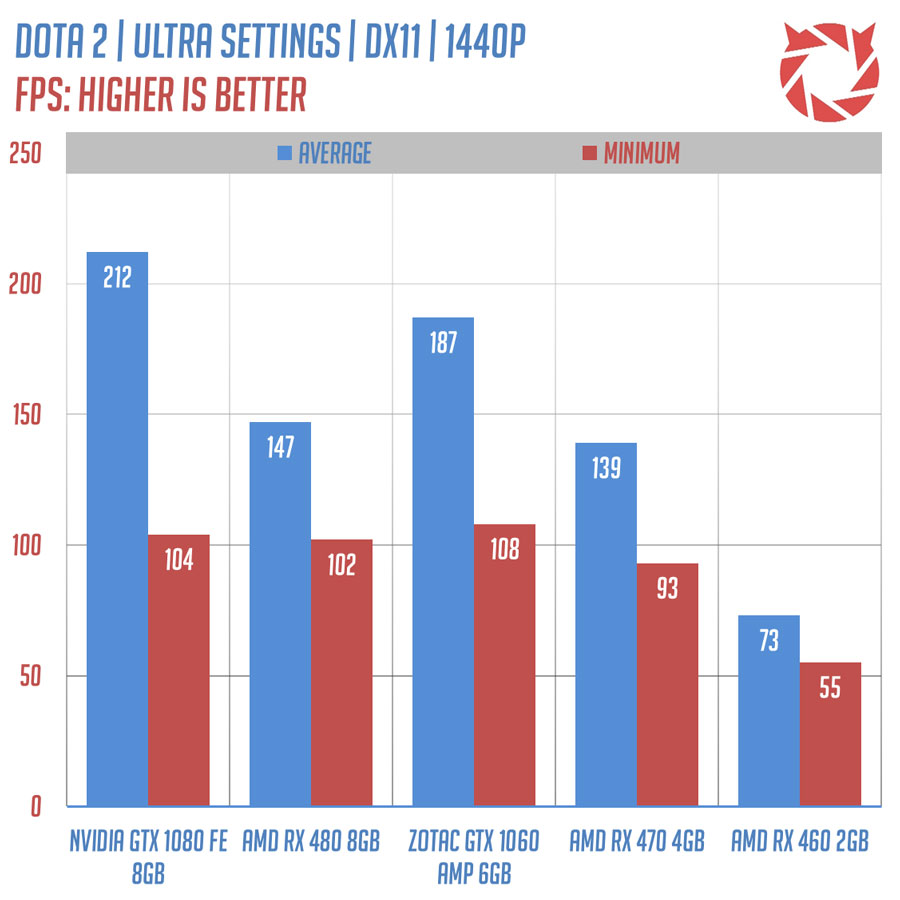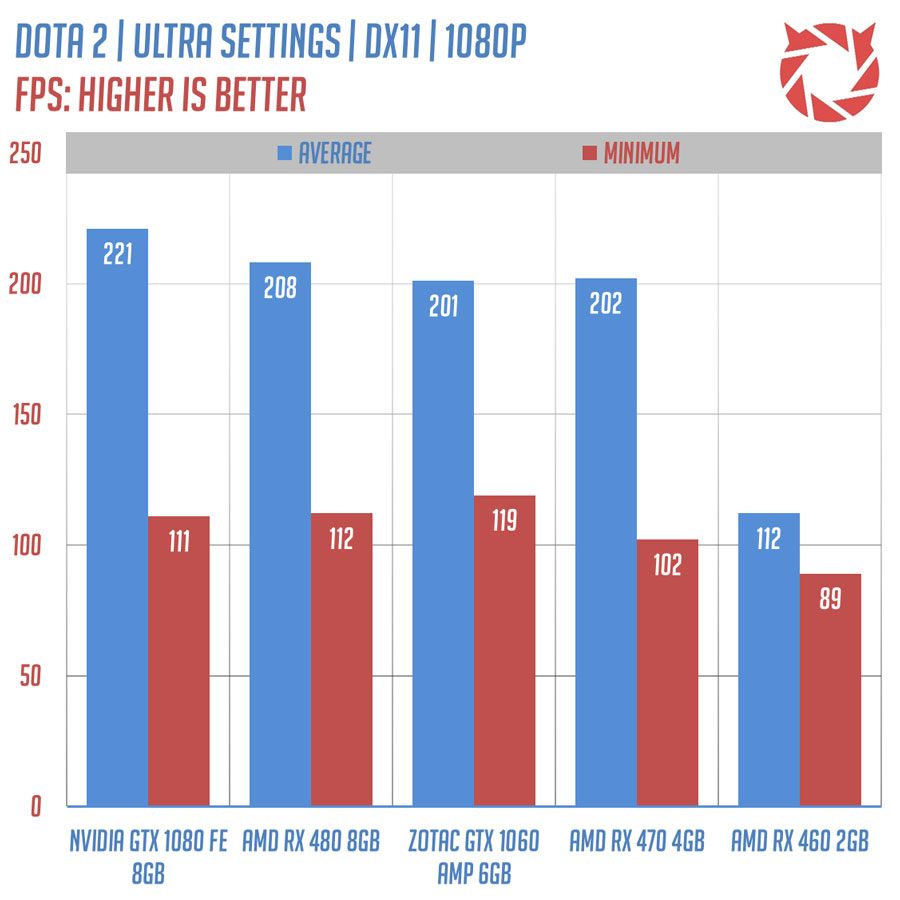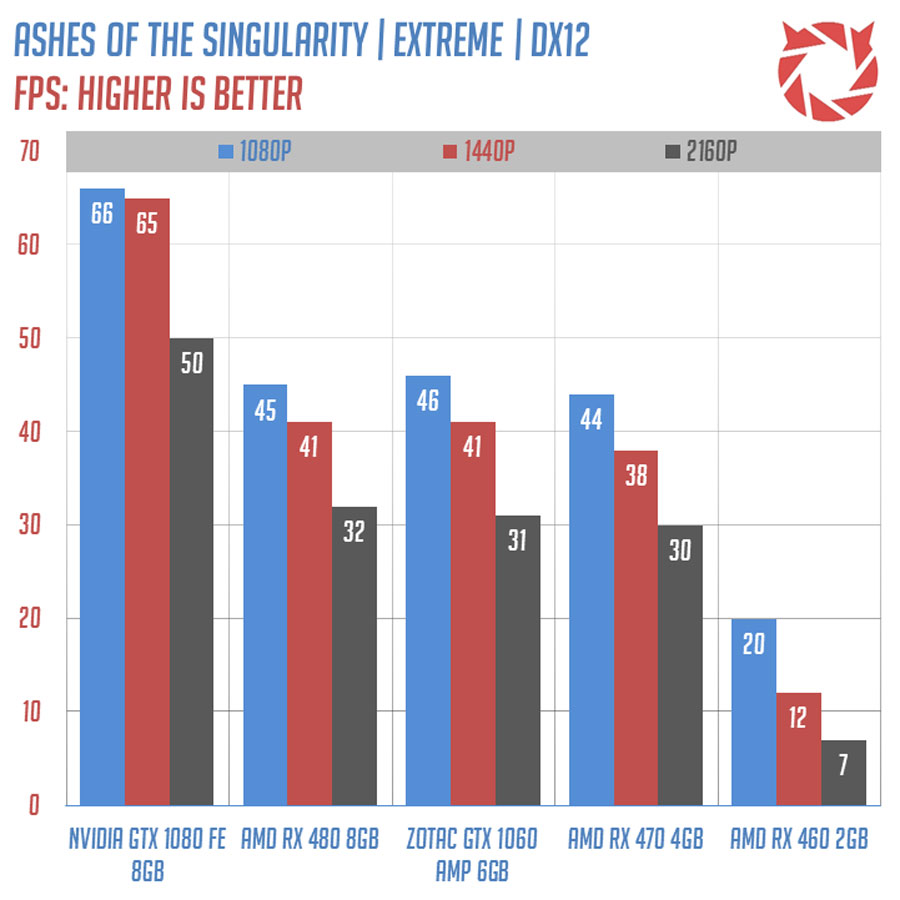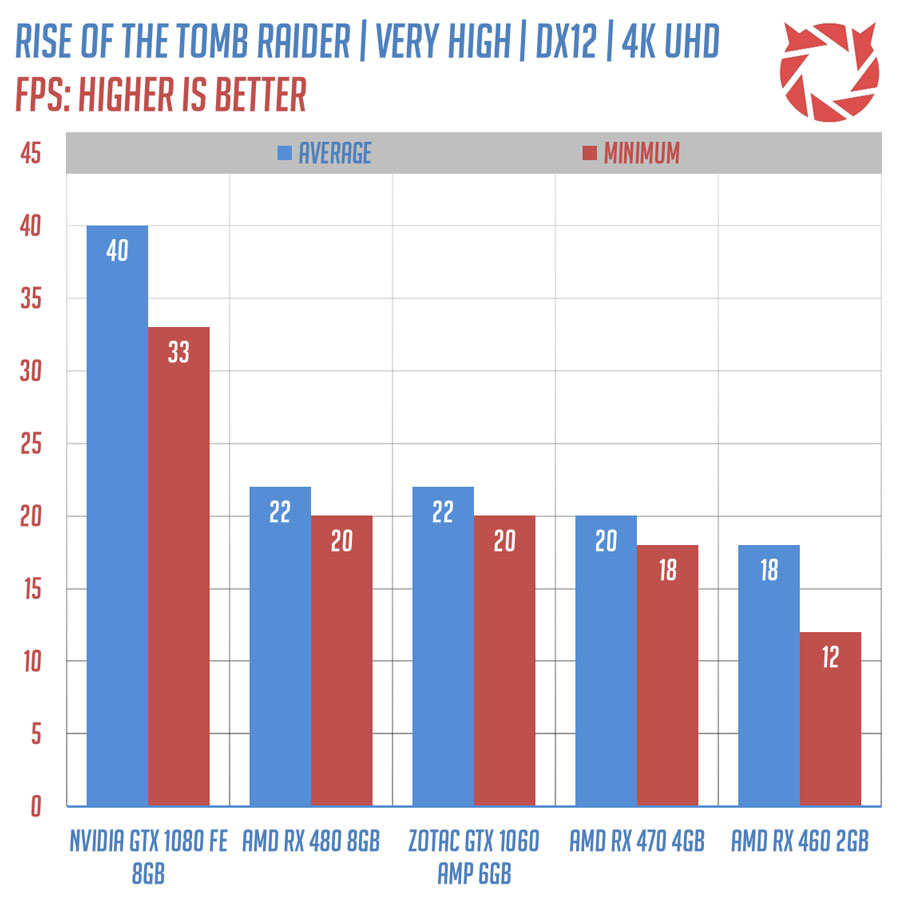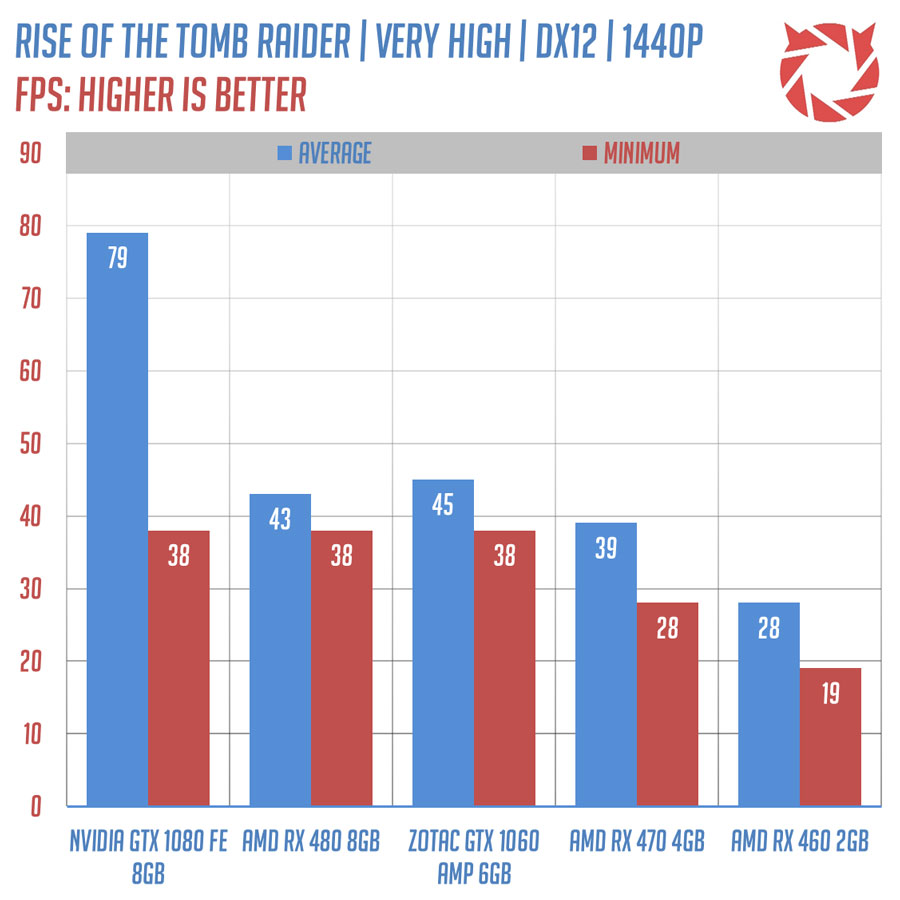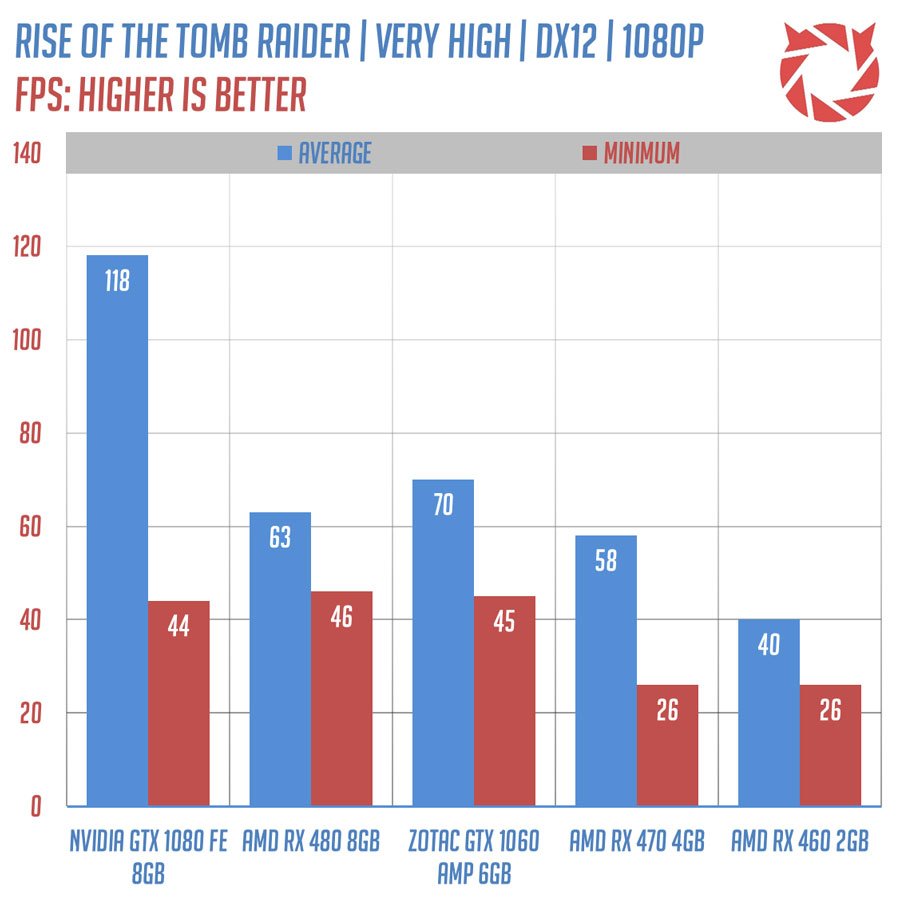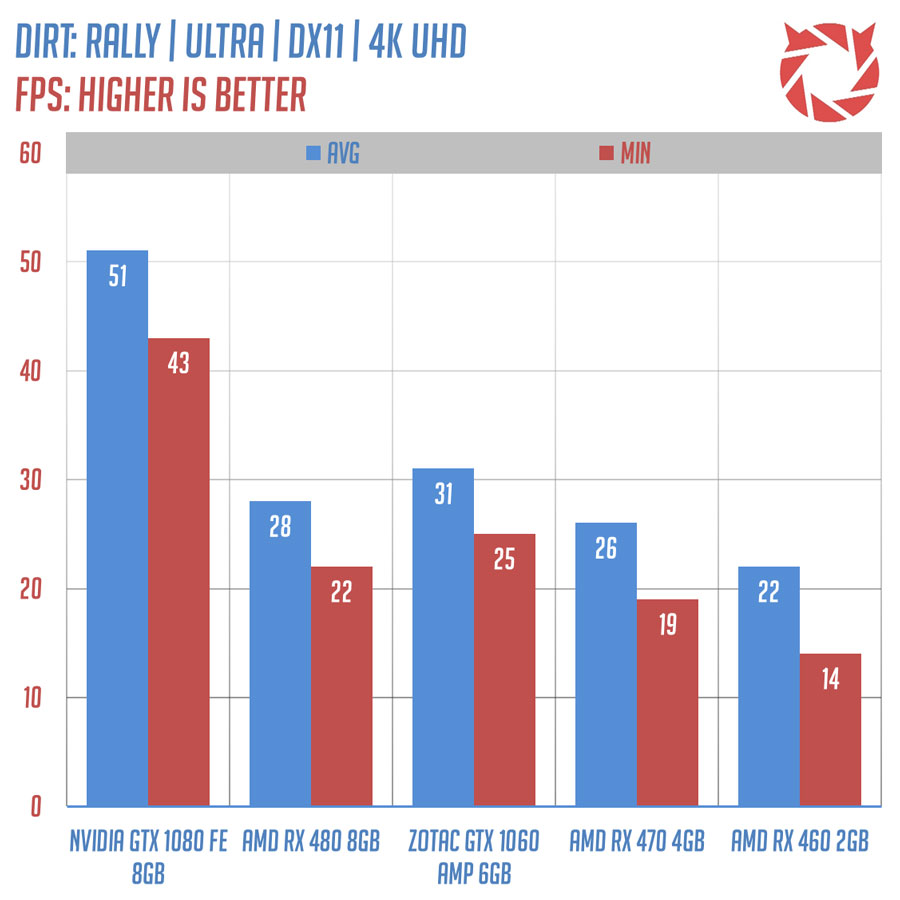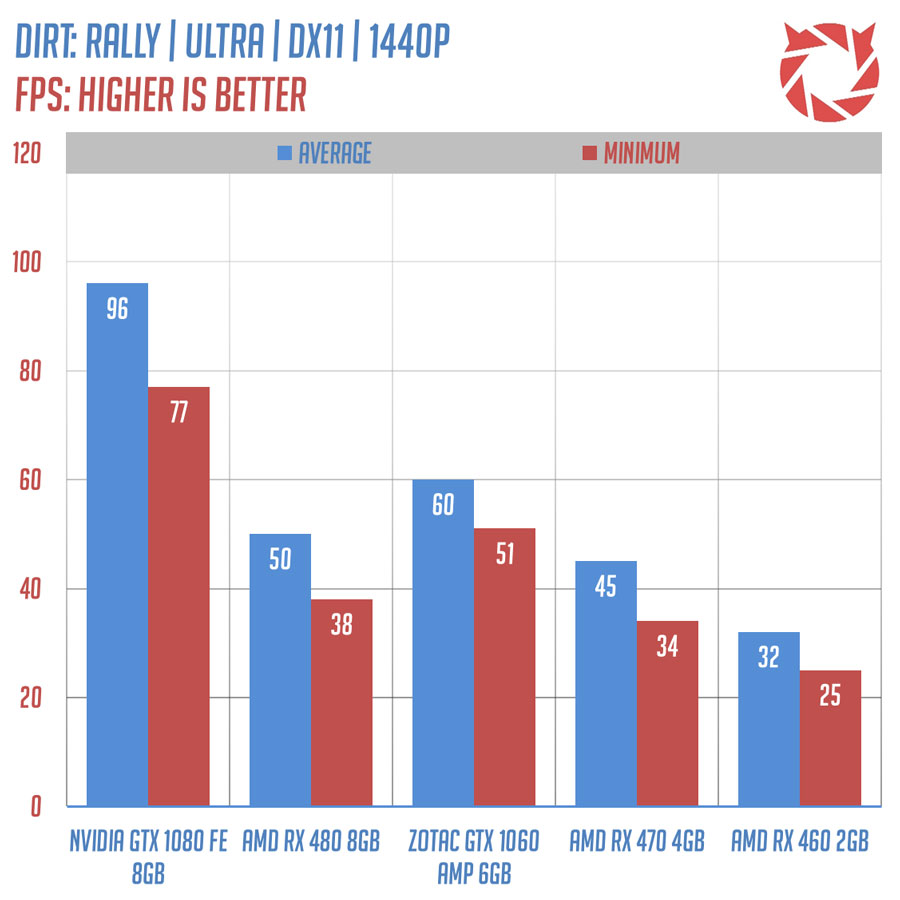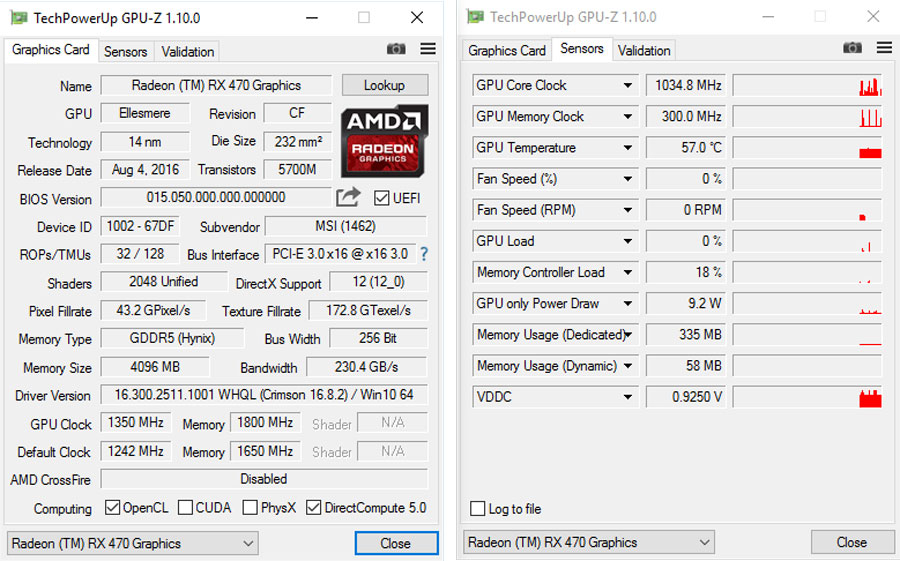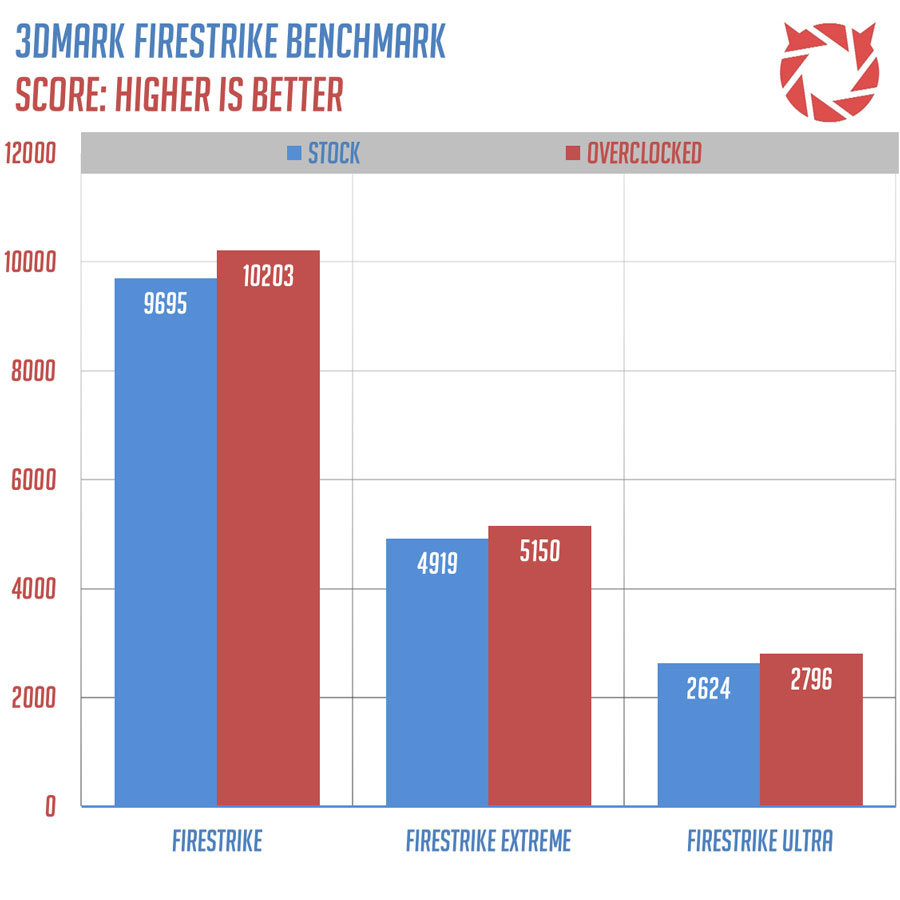Today, we shall complete our look at AMD’s Polaris graphics card offerings with the AMD RX 470. This card is sandwiched between the RX 480, and the RX 460 and is aimed to take the absolute 1080P 60 FPS+ crown at 179 USD or supposed to be 8, 300+ PHP.
The card we got is definitely not close to the 179 USD MSRP/SEP set by AMD as it features a whooping 249 USD SRP here in the Philippines. Immediately, things are not looking good for the RX 470 based on the local pricing alone and this is especially true if we are going to compare it to the 4GB version of the Radeon RX 480 – where the latter could be found around 11, 500 PHP or at around 245 USD. The cheapest we could find is a 208 USD card from XFX which should amount to 9, 700 PHP. Granted, a look at Amazon reveals that this card features a 199 USD SRP which is definitely favorable at the west.
Rant aside, the card we got is the MSI RX 470 Gaming X with a 4 GB VRAM featuring a factory OC configuration and a non reference cooler. This card has 3 clock modes with a 1242 MHz boost clock rated for its gaming mode which is the default and will be basis for this review. Cooling is definitely better than the reference one, with a dual down draft 100mm fans and a dense array of heat sink connected to a number of heat pipes. The card also features 0dB cooling, and a LED lighting feature. Learn more on this LINK.
Table of Contents:
AMD Polaris Architecture
Polaris is relatively new, but it brings so much to the table with performance, efficiency and full support for the latest and future gaming technologies. This includes Async Compute support that allows the GPU to handle complex task with efficiency. Therefore, decreasing latency and saving precious GPU resources. Along with it comes the Quick Response Queue that puts compute tasks at the top of the queue. Allowing compute heavy tasks to be set on higher priority. Those ACE units on the Polaris 10’s GPU diagram are responsible for the Async Compute functionality.
Of course low level APIs such as DirectX 12 and the Vulkan API are fully supported, allowing the developers to uncap the performance, efficiency, and capabilities of Radeon GPUs with extra headroom. The AMD Wattman has been introduced too. A new overclocking tool from AMD built right into the Radeon Crimson Software Suite.
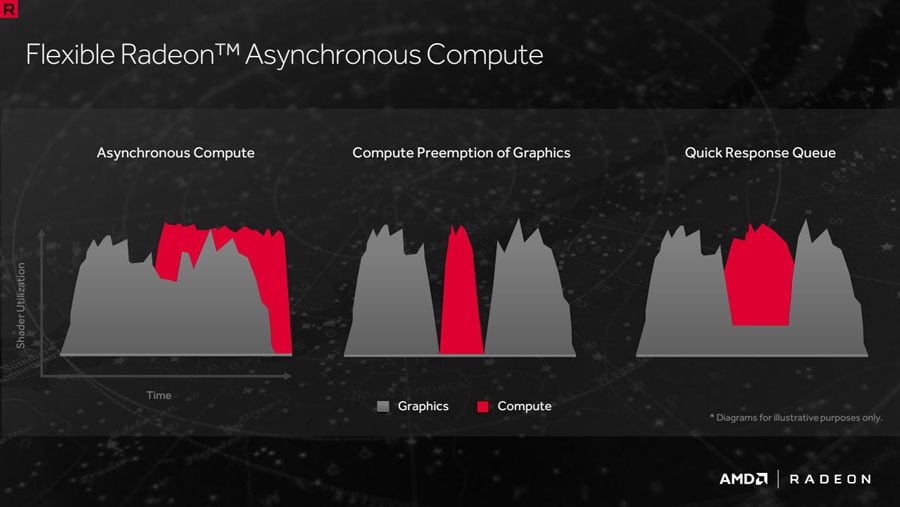
The Polaris architecture features new geometry engine enhancements including the Primitive Discard Accelerator. This effectively culls unnecessary geometry from the graphics pipeline. Allowing the graphics card to disregard any unnecessary stuffs from the pipeline. Only drawing the ones that will be displayed on screen.
Memory and Delta Color Compression are also improved, with an updated memory controller supporting a maximum of 8Gbps. Along with it comes the Lossless Delta Color Compression which should provide performance per bandwidth and power improvements.
The AMD RX 470 falls under the Polaris 10 architecture, with Polaris 11 geared towards a more budget conscious audience. While the RX 480 is geared towards VR and 1440P gaming, the RX 470 is geared for a smooth 1080P gaming experience.
Unboxing
The MSI RX 470 Gaming X comes in a MSI standard packaging for their higher tier models which indicates that this particular SKU is indeed a top end offering from the said company. Usually, you’ll get a good amount of accessories with this offering.
But wait, what’s this? A few paper works, a software DVD and that’s it? Seriously MSI has to step up their game with this 249 USD graphics. A power or display adapter would be a nice addition at least.
Design
The MSI RX 470 Gaming X is a beautifully crafted card equipped with the latest in MSI’s Twin Frozr technology. PCB is certainly designed from the ground up by MSI, together with the cooling unit that comes equipped with dual 100mm fans. The card weighs in at around 770 grams, and has a length of around 10.8 inches. Width is at 5.5″ so you’d better check the clearance of your chassis.
There’s no back plate installed and instead, gamers will be greeted by a matte black PCB. We expected a back plate for the price so let us see what the other components of the card has to offer.
The card features an LED lit logo which could be configured to display other color combinations. The red accents at the black part of the shroud are also LED lit but they can only display a Red back lighting. Now the cooler is of great quality with 8mm heat pipes dissipating heat across the dense array of heat fins. The VRM is also cooled via a slab of aluminum, but the VRAMs are left on their own so take that in mind. Power is provided by a single 8-pin PEG power connector.
Finally we get to see the display outputs of this RX 470 from MSI. We have a single Dual Link DVI here, a pair of full size DisplayPort 1.4 ports, and dual HDMI 2.0b ports. Good combination of display outputs. Nothing is out of place.
Test Setup
Graphics cards are not total strangers in our labs, but providing a precise result usually needs a lot of time and effort on our end. Helping us to do those things are hardware and software based measurement tools, a wide selection of popular titles, and benchmarks.
Third party background softwares are disabled while the benchmarks are running unless required. Benchmarks should include 720p, 1080p, 1440p, and 2160p if permitted or if necessary to the hardware being tested. The OS of choice is a 64-bit Windows 10 Pro with power options set to balanced.
Temperature
The Unigine Heaven is an intensive GPU benchmark that measures the performance of the graphics card. It doubles up as a stress testing tool with heavy usage of tessellation. Temperature values will be taken directly from GPU-Z, and will be cross referenced from other temperature logging tools. The ambient room temperature is checked at 27 Degree Celsius. Overwatch is used for the in-game temperature test.
Power
Our power consumption test will show how the GPU impacts system power consumption using Unigine Heaven, and Overwatch. The game and benchmark will run for approximately 15 minutes. Power readings are then taken from the entire test system using a watt meter connected to the wall socket.
Noise
The sound level of the whole system with the graphics card is taken as well. The room has an ambient noise level at around 37 dBA which is good enough to test the acoustic performance of any system or a graphics card’s cooling solution. The sound level meter is situated 2 feet away from the system.
The AMD Radeon RX 470, and in this case the MSI Radeon RX 470 Gaming X 4GB features a great balance between cooling and acoustics, showing a maximum of 40dB at load with a respectable 69c maximum temperature. Idle temperature is excellent for a 0dB fan compliant card at 42c max. Now being a non-reference card, this iteration of the RX 470 features a 23W less power draw compared to the reference RX 480. That’s based on the game tested, while the result from the benchmarking tool is almost identical to what the RX 480 has to offer.
Synthetic
3DMark 2013 is a suite of benchmarks catered for the gamers and enthusiasts. It features the FireStrike, FireStrike Extreme, and FireStirke Ultra benchmark presets which are suitable for wide range of systems. The total system scores from each presets will be used.
Unigine Heaven is a stress test and a benchmark tool built specifically for the graphics card. We will run a full test to see how the graphics card performs under such benchmark. The total system score will be used for comparison.
Unigine Valley is a stress test and a benchmark tool built specifically for graphics cards, similar to the Heaven benchmark. We will run a full test to see how the graphics card performs under such benchmark. The total system score will be used for comparison.
Synthetic performance is great for this iteration of the RX 470, with the reference RX 480 clinging on a 2% to 17% lead based on our benchmarks. From a card with such a measly 36 MHz bump over the reference one, that is commendable enough.
| TITLE | AMD RX 470 4GB | AMD RX 480 8GB |
| UNIGINE VALLEY 1080P | 100% | +11% |
| UNIGINE VALLEY 1440P | 100% | +11% |
| UNIGINE VALLEY 2160P | 100% | +10% |
| UNIGINE HEAVEN 1080P | 100% | +8% |
| UNIGINE HEAVEN 1440P | 100% | +17% |
| UNIGINE HEAVEN 2160P | 100% | +10% |
| 3DMARK FIRE STRIKE | 100% | +2% |
| 3DMARK FIRE STRIKE EXT | 100% | +3% |
| 3DMARK FIRE STRIKE ULTRA | 100% | +2% |
Gaming
Overwatch is Blizzard Entertainment’s critically acclaimed FPS shooter, running on a custom game engine developed by Blizzard utilizing the DirectX 11 API. Benchmarks will be taken from a custom game on a map called Temple of Anubis. The graphic settings is set to ultra with a 100% render scale.
DOTA 2 is Valve’s popular MOBA game, running on their own Source Engine 2. Benchmarks are taken from a match replay between Alliance and Natus Vincere. The graphic settings is set to the maximum. The frame rate is uncapped, and v-sync is turned off.
Ashes of The Singularity is an RTS game developed by Stardock and one of the first games to support the DirectX 12 API. Benchmarks will be taken directly from the game’s benchmarking tool, with the graphic settings is set to extreme.
Rise of the Tomb Raider is the direct sequel to 2013’s Tomb Raider reboot. It is developed by Crystal Dynamics and Eidos Montreal, with support for the DirectX 12 API. Settings are set to Very High, with SMAA, HBAO+, and Pure Hair enabled. Benchmarks were taken from the Syria level.
DIRT: Rally is Codemaster’s proper take on the rally racing game genre, with support for the DirectX 11 API. Settings are set to Ultra, with 8x SMAA enabled. Benchmarks were taken from the stages at Hafren, Wales.
With less than 4 compute units, nerfed stream processor at 2048, the RX 470 still managed to provide a great performance across our tested games and is almost identical to what the reference RX 480 has to offer. At DOTA 2 for example, the RX 480 only managed to get a lead of 3-6%. At the latest titles, especially at higher resolutions, the RX 480 is 10-11% faster than the RX 470 we got but is not a redeeming factor for the reference RX 480. A mighty fine performance from the MSI RX 470 Gaming X.
| TITLE | AMD RX 470 4GB | AMD RX 480 8GB |
| OVERWATCH 1080P | 100% | +4% |
| OVERWATCH 1440P | 100% | +5% |
| OVERWATCH 2160P | 100% | +10% |
| DOTA 2 1080P | 100% | +3% |
| DOTA 2 1440P | 100% | +6% |
| DOTA 2 2160P | 100% | +4% |
| AOTS 1080P | 100% | +2% |
| AOTS 1440P | 100% | +8% |
| AOTS 2160P | 100% | +7% |
| TOMB RAIDER 1080P | 100% | +9% |
| TOMB RAIDER 1440P | 100% | +10% |
| TOMB RAIDER 2160P | 100% | +10% |
| DIRT RALLY 1080P | 100% | +9% |
| DIRT RALLY 1440P | 100% | +11% |
| DIRT RALLY 2160P | 100% | +8% |
Overclocking
The AMD Wattman remains as our choice for overclocking AMD’s latest Polaris graphics cards, and with it we overclocked the MSI RX 470 Gaming X at 1350 MHz, with a corresponding 1800 MHz overclock for the GDDR5 VRAM. That’s 9% for both the core clock, and memory clock. Power limit is set to 100%, with the fan speed at default.
Gains we got from overclocking were acceptable at 5%, 5%, and 7% respectively across the 3DMARK FireStrike benchmarks. Nothing extraordinary here but do note that these scores from the overclocked RX 470 are better than the reference AMD RX 480.
Conclusion
The AMD Radeon RX 470 4GB completes our look at the Polaris graphics card offerings from AMD and we gotta say that performance is nothing short of amazing for this non-reference model. It’s really that close to the performance of the reference RX 480 8GB, and it’s easy to suggest that other non-reference RX 470 cards out there could do the same feat.
Now let us talk about the price, since this is the section where this certain card failed miserably – at least locally. First of, AMD had this card marketed as a 179 USD contender which on paper really sounds great. Granted our card is a non-reference edition one and has a great international price point of 199 USD which is just around 11% higher than what AMD claimed. Locally, this card retails ~40% higher than what it is supposed to so it’s in line with the non reference RX 480 4GB variants which is really bad. I’m not saying that you shouldn’t get the RX 470, but there are models such as this one that really puts the card on a bad light. I’d also like to add that you should avoid the 8GB variant of this card. They are not cheap – goes as far as 15, 000 PHP and there’s practically no use for the extra frame buffer.
I hate negativity so let us talk about the positive aspects of the Radeon RX 470. First of, you could get a non-reference RX 470 for about 9, 700 PHP. That’s just ~16% higher than the official pricing of AMD. Suffice to say you really have to double check the market for value oriented models to get the most out of your hard earned money. The XFX RX 470 RS is a good example with a 1266 MHz core clock, and an adequate cooler for 9, 700 PHP.
Going back at the card, the MSI RX 470 Gaming X is actually a good model. It features a great performance, a fantastic cooler, LED lit shroud, and a build quality that is definitely within the standards of MSI’s top tier products. It’s really hard to evaluate a GPU if you’re testing a non-reference model with an erratic pricing so let us be clear on this one: The MSI RX 470 Gaming X is a good card but local pricing isn’t really that great, and I would only recommend it if you could get the card at 199 USD tops. Otherwise, hit the streets and look for an RX 470 with a better pricing. That’s all there is to say.
MSI Radeon RX 470 Gaming X
Summary
The MSI Radeon RX 470 Gaming X is a stellar card that closes in the gap between the RX 470 and the RX 480. However, pricing is erratic across the globe.


